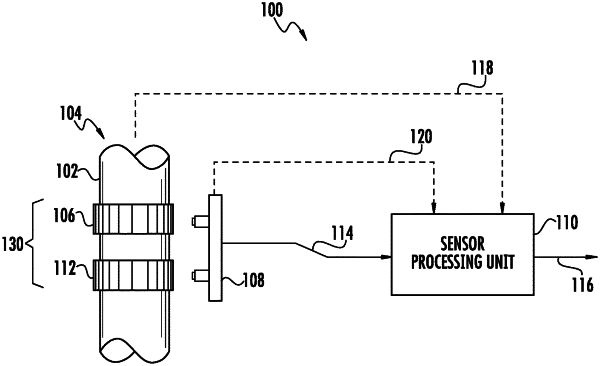| CPC G01L 25/003 (2013.01) [G01L 3/101 (2013.01); G01L 3/109 (2013.01)] | 21 Claims |

|
1. A system for measuring torque on a drive train component of a rotating drive system, the system comprising:
a target assembly configured to rotate with the drive train component, the target assembly comprising two target wheels, wherein a plurality of sensor targets is circumferentially distributed around each target wheel of the two target wheels;
a sensor assembly located proximate to the target assembly, the sensor assembly comprising a plurality of sensors mounted radially around the drive train component, wherein the plurality of sensors is configured to detect the plurality of sensor targets as the target assembly rotates with the drive train component; and
a sensor processing unit configured for:
receiving target calibration data that is matched to the target assembly implemented in the system, wherein the target calibration data comprises unique verification data;
receiving sensor calibration data that is matched to the sensor assembly implemented in the system, wherein the sensor calibration data comprises unique sensor verification data;
verifying, using the unique verification data, that the target calibration data corresponds to and matches the target assembly implemented in the system, the unique verification data being used to distinguish the target assembly implemented in the system from other target assemblies sharing a same assembly design;
verifying, using the unique sensor verification data, that the sensor calibration data corresponds to and matches the sensor assembly implemented in the system, the unique sensor verification data being used to distinguish the sensor assembly implemented in the system from other sensor assemblies sharing a same assembly design; and
receiving sensor signals from the sensor assembly; and
outputting a torque signal based on the sensor signals, the target calibration data, and the sensor calibration data.
|